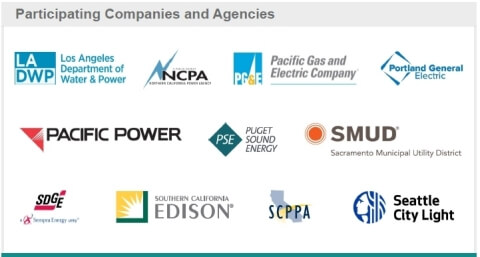Electric utilities in three West Coast states have released the results of a study that could lead to significant reductions of pollution from freight transportation up and down the Pacific Coast and create jobs in an economy hit hard by the novel coronavirus.
The West Coast Clean Transit Corridor Initiative, a study commissioned by a collaboration among nine electric utilities and two agencies representing more than two dozen municipal utilities, recommends adding electric vehicle (EV) charging for freight haulers and delivery trucks at 50-mile intervals along Interstate 5 and adjoining highways.
“The results of this study provide a roadmap for electric utilities in Washington, Oregon and California to help electrify transportation in a coordinated fashion,” says Katie Sloan, director of eMobility and building electrification at Southern California Edison.
“This study comes at a time when we believe major investment in EV charging infrastructure will help significantly with economic recovery from COVID-19 in our states,” she adds.
Other sponsors of the study are the Los Angeles Department of Water & Power, Northern California Power Agency, Pacific Gas and Electric Co., Pacific Power, Portland General Electric, Puget Sound Energy, Sacramento Municipal Utility District, San Diego Gas & Electric, Seattle City Light and Southern California Public Power Authority. HDR completed the study.
The study’s final report proposes a phased approach for electrifying the I-5 corridor. The first phase would involve installing 27 charging sites along I-5 at 50-mile intervals for medium-duty electric vehicles – such as delivery vans – by 2025. Then, later, 14 of the 27 charging sites would be expanded to also accommodate charging for electric big rigs by 2030, when it is estimated that 8% of all trucks on the road in California could be electric.
Of the 27 proposed sites, 16 are in California, five are in Oregon and six are in Washington. An additional 41 sites on other highways that connect to I-5 are being proposed for electrification. Those highways include Interstates 8, 10, 80, 210 and 710 and state routes 60 and 99 in California; I-84 in Oregon and I-90 in Washington.
In California, the transportation sector accounts for nearly 80% of the state’s air pollution and more than 40% of all greenhouse gas emissions. Washington and Oregon face similar environmental challenges, transportation being the largest contributor to air pollution and greenhouse gas emissions in those states as well.
The report recommends expanding state, federal or private programs that provide funding for electrification, which could further accelerate electric truck adoption and expand economic opportunities associated with building sites. Several utilities in California – LADWP, PG&E, SDG&E and SCE – have programs aimed at supporting the adoption of electric trucks, but more support will be needed to reach electrification levels identified in the study and to meet state climate goals.
To access HDR’s full West Coast Clean Transit Corridor Initiative study, click here.
Photo: Sponsors of the West Coast Clean Transit Corridor Initiative





